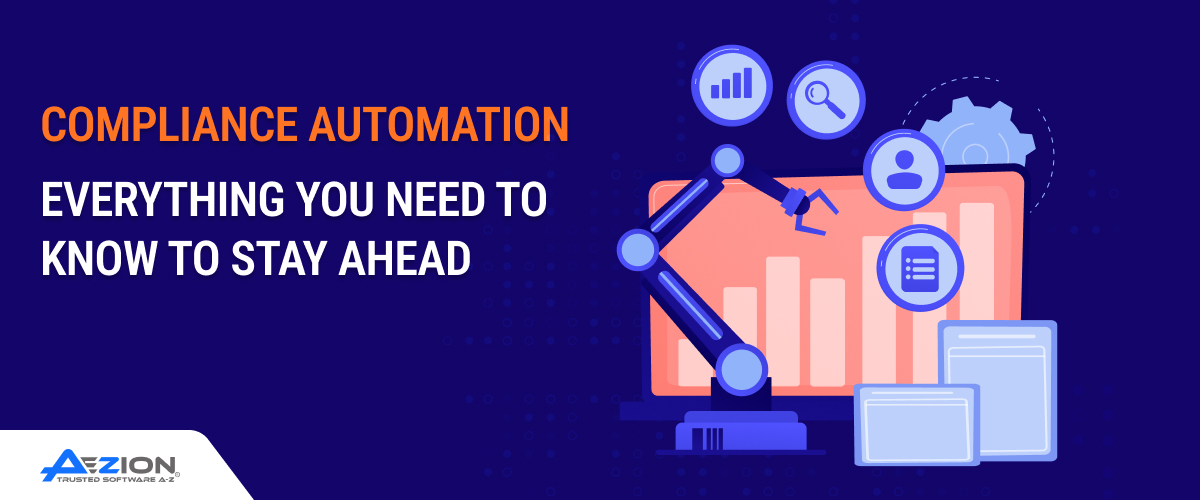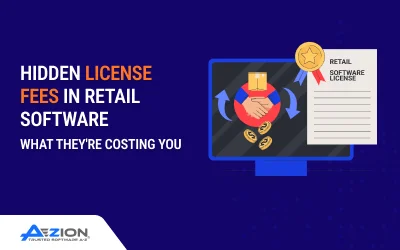Summary
Compliance automation simplifies the way organizations meet regulatory requirements by replacing manual processes with digital workflows and monitoring systems. It minimizes errors, improves efficiency, reduces risk exposure, and keeps businesses audit-ready across changing regulatory landscapes.
Introduction
Compliance requirements are becoming increasingly complex, making manual tracking difficult and time-consuming. Compliance automation provides a structured, technology-driven approach that helps businesses stay aligned with regulations, reduce operational risks, and maintain accuracy while saving significant time and resources.
What is Compliance Automation?
Compliance automation is the use of digital tools and rule-based workflows to manage regulatory tasks. It helps businesses track requirements, maintain records, generate reports, and monitor compliance activities without relying solely on manual processes or human intervention.
Key Benefits of Compliance Automation
Compliance automation streamlines regulatory processes, accelerates reporting, and minimizes reliance on manual work. It keeps businesses audit-ready, lowers compliance costs, and ensures consistent, accurate results even as regulations change.
- Reduce Human Error: Automation applies consistent rules and eliminates manual data entry mistakes, missed deadlines, and oversight issues, preventing costly compliance failures.
- Save Time and Cost: Automated workflows reduce the time spent on tracking and reporting, streamline audit preparation efforts, and lower overall compliance expenses.
- Improve Transparency: Automated logs and reports create a clear audit trail, making it easy for regulators and teams to verify compliance activities.
- Ensure Continuous Monitoring: Real-time monitoring flags compliance issues immediately, helping businesses act quickly and avoid penalties before they escalate.
Common Types of Compliance Automation
Different automation types handle specific regulatory needs, from managing policies to tracking risks. Using the right mix helps businesses streamline workflows, stay compliant, and respond quickly to audits or regulatory changes.
- Policy and Document Management: Centralizes policies, procedures, and compliance documents, ensuring version control and easy access for teams during audits.
- Audit Trail Automation: Automatically records actions and changes, creating reliable logs that simplify internal and external audit processes.
- Regulatory Reporting: Generates accurate reports on time, reducing manual effort and improving compliance with filing deadlines.
- Risk and Security Monitoring: Tracks risks, access controls, and security events in real time to prevent compliance breaches.
8 Top Compliance Automation Tools
Modern compliance automation tools simplify staying audit-ready by replacing manual processes with continuous monitoring and automated workflows. They minimize human error, keep documentation organized, and maintain compliance year-round—removing the pressure of last-minute audits. Below are eight top tools suited for different compliance requirements.
Scrut Automation
Scrut is a risk-first GRC platform designed to automate compliance at scale. It collects evidence automatically, monitors controls continuously, and maps compliance across 50+ frameworks like SOC 2, ISO 27001, HIPAA, and GDPR, ensuring organizations stay audit-ready year-round.
Use Cases:
- Continuous monitoring of controls and risks
- Multi-framework compliance mapping
- Automated evidence collection
- Role-based workflows for collaboration
- Real-time compliance posture reporting
Sprinto
Sprinto helps cloud-first companies get audit-ready fast by automating compliance workflows and evidence collection. It supports SOC 2, ISO 27001, HIPAA, GDPR, and PCI DSS while offering real-time alerts, centralized dashboards, and rapid deployment for scaling SaaS businesses.
Use Cases:
- Rapid SOC 2 or ISO readiness
- Automated cloud security monitoring
- Gap tracking and remediation workflows
- Role-based task management
- Centralized compliance dashboard
LogicGate Risk Cloud
LogicGate Risk Cloud is a no-code, configurable GRC solution for enterprises. It automates risk assessments, policy approvals, and audit workflows, helping teams build a connected risk ecosystem that provides clear insights and simplifies compliance management across departments.
Use Cases:
- Customizable risk assessment workflows
- Third-party vendor risk management
- Policy and control tracking
- Regulatory audit scheduling and tracking
- Cross-functional compliance collaboration
Drata
Drata continuously monitors security controls, integrates with cloud, HR, and identity tools, and automates evidence collection to minimize manual work. It keeps teams compliant between audits and ensures a smooth, stress-free certification process.
Use Cases:
- Continuous control monitoring
- Automated evidence gathering
- DevOps & CI/CD compliance integration
- Real-time compliance gap alerts
- Multi-framework readiness management
Vanta
Vanta automates compliance tasks by collecting evidence, running security checks, and mapping requirements across frameworks like SOC 2, ISO 27001, and HIPAA. Its dashboards provide visibility into risk posture, helping teams prepare for audits proactively.
Use Cases:
- Vendor risk assessments
- Continuous compliance health checks
- Automated documentation updates
- Real-time remediation tracking
- Cross-framework control mapping
OneTrust
OneTrust is a robust compliance and privacy platform that supports 50+ global frameworks. It automates policy workflows, risk scoring, and audit preparation, making it ideal for enterprises managing complex, multi-jurisdictional regulatory requirements.
Use Cases:
- Multi-region privacy compliance (GDPR, CCPA)
- Third-party vendor risk management
- Automated policy workflows
- Enterprise-level audit preparation
- Risk and impact assessments
Hyperproof
Hyperproof centralizes compliance and risk management into a single platform. It streamlines evidence collection, tracks control status, and fosters collaboration, ensuring audit-readiness throughout the year while reducing duplicated efforts.
Use Cases:
- Year-round audit readiness
- Automated evidence management
- Risk assessment and reporting
- Cross-team collaboration tools
- Vendor compliance tracking
AiPrise
AiPrise is built for fintech and regulated industries, automating KYC/KYB checks, fraud detection, and compliance workflows. It accelerates customer onboarding while maintaining strict adherence to regulatory standards and reducing onboarding friction.
Use Cases:
- Automated identity verification
- Fraud detection automation
- Compliance-ready onboarding processes
- Risk-based customer profiling
- Regulatory reporting and tracking
Industries Using Compliance Automation
Compliance automation is essential in industries where regulations are strict and audits are frequent. It helps organizations minimize risk, streamline operations, and maintain consistent compliance with industry-specific requirements.
- Healthcare: Ensures HIPAA, SOC 2, and patient data privacy compliance with automated reporting and secure access controls.
- Finance: Manages KYC, AML, and regulatory filings accurately while maintaining transparent audit trails for regulators and stakeholders.
- Manufacturing: Tracks safety standards, quality checks, and supplier compliance to ensure adherence to industry regulations without production delays.
- IT and SaaS: Simplifies GDPR, ISO, and SOC 2 compliance with automated monitoring, data controls, and timely reporting.
- Construction: Keeps projects compliant with labor laws, safety regulations, and environmental standards by automating inspections, documentation, and reporting.
Challenges in Implementing Compliance Automation
Compliance automation is powerful, but successful adoption requires planning. Businesses often face technical, financial, and organizational hurdles that need to be addressed early for a smooth rollout and measurable results.
- Integration with Legacy Systems: Connecting automation tools with outdated or siloed systems can be complex and may require custom integrations or phased modernization.
- Upfront Costs and ROI Concerns: Initial software, setup, and configuration costs may seem high. Demonstrating long-term cost savings and compliance risk reduction is key to justifying the investment.
- Training and Change Management: Employees need guidance and ongoing support to adopt automated workflows and ensure compliance processes remain consistent.
- Data Quality Issues: Poor or incomplete data can lead to false alerts, incorrect reports, or missed compliance requirements. Data cleanup is often a critical first step.
- Regulatory Updates and Maintenance: Automation systems must be kept up-to-date with changing laws and standards to avoid falling out of compliance.
- Stakeholder Resistance: Some teams may be reluctant to replace familiar manual processes, requiring communication and clear benefits to gain buy-in.
How to Get Started with Compliance Automation
A structured approach helps overcome adoption hurdles and ensures compliance automation delivers real value. Following these steps makes implementation smoother and more effective.
- Assess Your Compliance Gaps: Begin with a compliance audit to identify risks, data gaps, and manual processes that need automation. This step ensures you focus on the areas with the greatest impact.
- Choose the Right Tools: Select automation tools that integrate with existing systems, support necessary regulations, and can be updated easily as standards evolve. Consider scalability to support future growth.
- Involve Stakeholders and Train Teams: Engage compliance officers, IT, and operations early to gain buy-in. Provide clear training so employees understand workflows and can use the system confidently.
- Measure and Optimize Continuously: Track performance metrics, review alerts, and update rules regularly. Continuous optimization keeps automation aligned with regulatory changes and business needs.
Future of Compliance Automation
Compliance automation is evolving beyond simple rule-based workflows. Emerging technologies are making compliance smarter, more proactive, and deeply integrated into daily operations.
- AI-Driven Compliance: Artificial intelligence will analyze large datasets, detect anomalies, and recommend corrective actions faster than manual reviews, reducing compliance risk.
- Predictive Monitoring and Analytics: Future systems will forecast potential compliance issues before they occur, allowing businesses to act early and avoid costly violations.
- Real-Time Dashboards: Interactive dashboards will provide instant visibility into compliance status, enabling decision-makers to respond quickly to issues and maintain continuous readiness.
Conclusion
Compliance automation empowers businesses to meet regulatory demands efficiently while reducing risks and costs. By streamlining reporting, minimizing human error, and enabling real-time monitoring, it keeps organizations audit-ready and focused on growth. Embracing automation today builds a stronger, more compliant future.
FAQs
What is compliance automation?
It involves the use of digital workflows and monitoring tools to automate compliance tasks, such as reporting, tracking, and auditing, with minimal manual effort.
Why is compliance automation important?
It lowers risk, reduces errors, saves time, and keeps businesses aligned with changing regulations to avoid penalties.
Is compliance automation expensive?
Initial costs exist, but long-term savings from faster audits, fewer errors, and reduced penalties typically outweigh the investment.
Which industries benefit the most?
Healthcare, finance, manufacturing, retail, construction, and IT gain the most from automation due to strict regulations and frequent audits.
Can small businesses use compliance automation?
Yes. Many solutions are affordable and scalable, making automation practical even for startups and smaller organizations.




